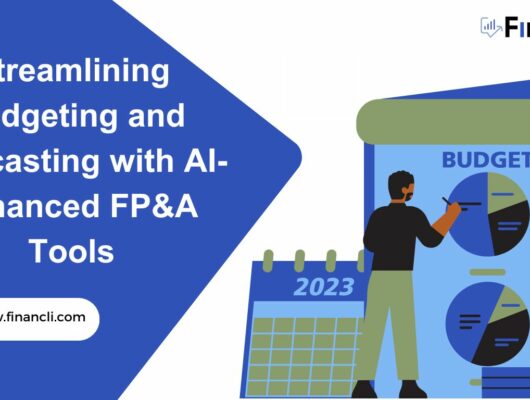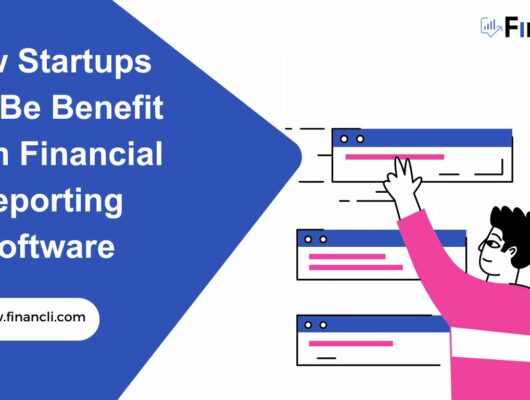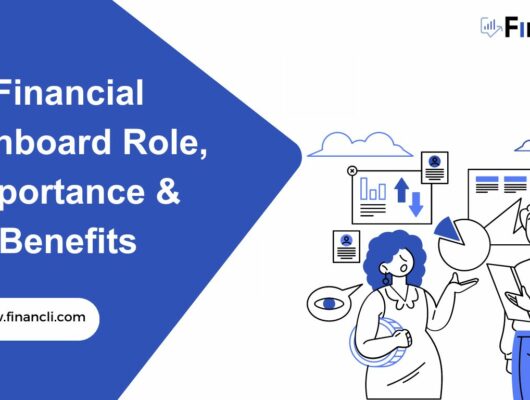Improving Financial Clarity through Reporting Software
In the business world, financial transparency and accuracy are of utmost importance. Financial transparency makes a business confident about its position in the market. It helps businesses to have a trust relationship with investors and stakeholders. Businesses are dependent on data to make financial decisions in order to achieve their business goals. Not only that, but the data that is being used to acquire data-driven insights and make critical decisions should be reliable.
Traditional reporting methods have existed for a long time now. Spreadsheets, like Google Sheets or Excel with manual data entry, pose a risk of human error. The rate of human error increases as the data becomes more lengthy and complex. These errors make data less reliable for businesses to make decisions based on. Compiling this data for insights is also a time-consuming task.
Along with that, these reports do not get updated automatically. Businesses need a solution that allows them to have real-time insights and actionable data that is reliable, too. Reporting software is a one-stop solution to all these problems.
Reporting software is a reliable solution for financial management. It offers automated integration of data from different sources and presents this data as customizable dashboards and interactive reports. The simple drag-and-drop interface of modern reporting tools significantly reduces the learning curve for beginners. Features beyond reports include the fact that there is no chance of human error in these reports, and these reports get updated automatically in real-time. The complex reporting process is no longer a nightmare after the advent of reporting tools. This article discusses the benefits of financial reporting software in ensuring transparency and accuracy in financial reporting processes.
Challenges of Traditional Financial Reporting Methods

Traditional reporting methods follow a tedious reporting process that has many challenges that slow down the business growth process.
Time-Consuming Data Collection and Consolidation
Time is money. Traditional data collection and consolidation methods are very time-consuming processes. Finance teams spend hours gathering data from different departments operating under a business. This time wastage leads to delays in making the right decisions at the right time, which negatively impacts business performance.
Human Error
Human error is a significant contributor to financial error. According to research by IBM, $3.1 trillion is lost each year due to bad data. Traditional reporting methods are also dependent on human data entry. Mistakes in the data entry process can lead to a loss in financial performance.
The Struggle for Real-Time Financial Insights
Businesses need real-time data insights. However, traditional reporting systems do not have any features to accommodate real-time changes. The lack of real-time business intelligence disables businesses from adapting swiftly to market changes. For accurate reports on new data, the traditional reporting method requires including new data in previous reports and then making changes in data presentation. And all of this is a manual process.
Collaboration and Communication Hurdles
In traditional systems, each department has its own dataset to operate on. Accounting teams, sales team, and marketing team each have their own dataset. This data also includes overlapping data. Any change in data in one department is only reflected automatically on the same data in other departments once done manually. This lack of consistency in data can also lead to disasters in business processes. Traditional reporting methods lack the dynamic and interactive dashboards necessary for effective resource management.
The Solution: Enhancing Transparency with Reporting Software
Different types of reporting tools offer different reporting features. Reporting software that includes the goodness of machine learning is the solution to all challenges of traditional reporting systems. Key features of reporting software are advanced analytics reporting, interactive dashboards, and customizable reports. Business Intelligence Tools like Financli offer drag-and-drop interfaces, simplifying the creation of customized reports for business users and business analysts. Advanced Report software is easy to use and offers seamless integration into business existing systems. They come with a user-friendly interface that even non-technical users can use this software effectively.
Automated Data Entry and System Integration
A powerful reporting platform comes with an automated data entry feature. This feature is a blessing for data management. Employees save precious time with this feature, along with a decreased risk of error. Data consolidation was never so easy without reporting software. By utilizing machine learning and integrating seamlessly with business apps, report software offers solid option for how data is managed and accessed. Plug-and-play reporting tool integrate easily in any system.
Ensuring Data Accuracy
As there is no need for manual data entry and no human interference when merging data between different departments, there are significantly less chances of error in the data. As data is safe and secure, business owners can make business decisions with more confidence as reporting systems ensure a transparent and fair view of data.
Real-Time Reporting and Dashboards
Finance Reporting software comes with an intuitive interface and has the power of real-time reporting and interactive dashboards to understand the data more precisely and efficiently. It caters strong option of creating different form of reports easily. Businesses can easily modify these custom reports and customized reporting dashboards according to their needs with just a few clicks. Interactive dashboards with customization options also enable users to understand the data easily. The Finance team can also hide irrelevant data in any presentation with few easy modifications in the financial reports.
Centralized Data Access and Collaboration
Modern Reporting Solutions provides a centralized database that follows business rules to store data. In this case, each department is getting its required data from a single data source that acts as a single source of truth. This centralization of data ensures that each department is working on the same instance of data. Thus reducing the risk of data inconsistency among departments.
Benefits of Reporting Software for Financial Transparency

Adopting finance reporting software equipped with robust option for embedded analytics and advanced reporting features transforms data into actionable insights, fostering informed decisions and strategic planning. Some benefits of finance reporting software for financial transparency are as follows:
Building Trust with Stakeholders
Reporting software builds trust among stakeholders. Reporting software ensures financial transparency and accuracy. Stakeholders are more confident now that they are provided with accurate data with actionable insights for decision-making.
Data-Driven Decision Making
Advanced features in a reporting platform ensure real-time updates and real-time analytics in data and reports so business owners and stakeholders can make much better decisions to achieve their business goals. Reporting tools provide a built-in analytics platform to analyze data and predict outcomes. This added intelligence helps businesses to make informed decisions. Artificial intelligence-powered finance reporting software offers advanced analytics to business people.
Enhanced Regulatory Compliance
Advanced reporting tools simplify compliance with financial regulations. Reporting software can be adjusted to meet specific regulatory requirements. This feature further reduces the risk of non-compliance and associated penalties. With comprehensive integration capabilities, reporting software serves as a central management platform, ensuring data consistency across all source systems.
Fraud Reduction through Audit Trails
Financial reporting solutions also reduce the risk of fraud. They offer robust audit trails and internal controls, which ensure that every financial transaction is traceable, leading to transparency and accountability within the organization.
Streamlining Financial Operations
Advanced reporting platform streamlines financial operations. It improves the overall efficiency of the enterprise team. Automation helps save time and resources, letting teams focus on big plans instead of manual data work.
Frequently Asked Questions
What is reporting software?
Reporting software is a tool used to collect, analyze, and present data in a structured format. It transforms raw data into insightful reports and offers real-time financial insights in the form of interactive dashboards.
What Should You Look For in Reporting Tools?
When choosing a reporting tool, ensure that it offers a user-friendly interface, real-time data access, and customization in reports and dashboards.
Conclusion
In conclusion, the transition to advanced reporting platforms like Financli ensures businesses not only meet but exceed their financial reporting requirements. Industry-leading business intelligence tool makes reporting for businesses a piece of cake. By embracing solutions designed for various scales—from startups with 50-249 employees and mid-level companies with 250-999 employees to larger enterprises with 1,000-4,999 employees—companies can leverage real-time data models and robust business intelligence to manage the challenges of the modern business world.






